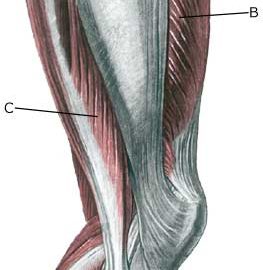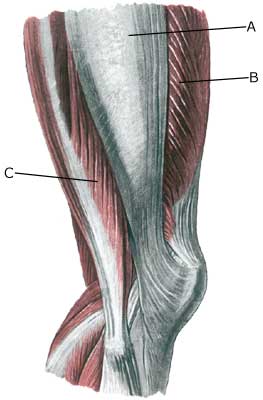RUNNERS KNEE
|
||
|
||
| Cause: Repeated uniform movement in the knee joint (running, cycling) can cause the tendon (iliotibial tract) to slide over the external side of the thigh bone directly above the knee. An inflammation can consequently occur in the tendon, or in the bursa directly underneath. Athletes with a tendency to bowlegs have an increased risk (Photo)
Symptoms: Slowly insetting pain externally on the knee, aggravated when applying pressure, when stretching the iliotibial tract and running. Acute treatment: Click here. Examination: The diagnosis can usually be made on the basis of a normal medical examination. If there are any doubts regarding the diagnosis, an ultrasound scan (or MR scan) is recommended. Treatment: Treatment comprises relief, stretching of the iliotibial tract and rehabilitation. It is imperative that footwear has good shock absorbing soles. An incorrect foot posture should be corrected by use of special shoes or insoles. If progress is not forthcoming, medical treatment in the form of rheumatic medicine (NSAID) or the injection of corticosteroid can be considered. A surgical splitting of the ligament can be performed in sever cases which do not react to relief, correct rehabilitation or medicinal treatment (article). Complications: If smooth progress is not achieved it should be considered whether the diagnosis is correct, which will often require supplementary examination (X-ray, ultrasound scanning or MR scanning). The following should especially be considered:
Special: Shock absorbing shoes or inlays will reduce the load in the knee. In case of lack of progress or recurrence after successful rehabilitation, a running style analysis can be considered to evaluate whether correction of the running style is indicated. |


